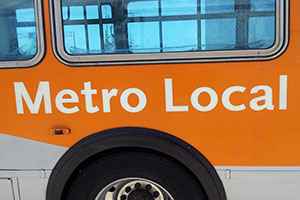The Los Angeles Metro increased the fares for its one-way, weekly and monthly passes last week. A one-way pass went from $1.50 to $1.75, a day pass rose by two dollars while the weekly increased by five dollars. The monthly pass has now reached the triple digits, according to a news release on Metro’s website. In exchange for raising prices, Metro will give riders two hours of free transfer rides for one-way travel if they use Tap cards.
“We have some of the lowest fares in the country, even with the change,” said Dave Sotero, a spokesman for Metro.
In order to raise the fees, Metro conducted several public hearings before presenting the recommendation to the board of directors. The public transportation company raised the fees in order to gain revenue.
The majority of the Los Angeles County Metropolitan Transportation Authority, including Los Angeles County Supervisor Mark Ridley-Thomas and Mayor Eric Garcetti, approved of the increase, which effects both buses and rail lines.
“We currently get about 26 percent of our revenue from the fare box,” said Sotero. Part of that money will go to the operating deficit. Metro needs funding to maintain 2,228 buses and 87 miles of rail within the county, according to Sotero.
“As we continue to expand the transit system and make transit more useful for more Angelenos, our operating costs increase accordingly,” he said.
Click to hear the opinions of South L.A. bus-goers:
However, Metro has long needed to persevere through deficits according to Lisa Schweitzer, Associate Professor of the Price School of Public Policy at USC.
“They’re always scrambling for revenue,” she said. “Raising fares can be a dangerous thing to do.”
Eric Romann, an organizer at the Bus Rider’s Union believes the raise will have a negative impact on working class people.
“It will hit hard for people who are earning less money,” he said.
The fee hikes could encourage people to opt out of taking the bus, he added, which could boost street congestion, he added.
“It’s essentially discouraging people from using mass transit.”
Sotero, however, predicts that even people who stop taking the bus due to the cost increase will eventually gravitate back to Metro.
“I anticipate a dip in ridership for about six months,” he said. “Ridership has traditionally come back normal after a six month period.”
See also from Intersections: Bus Riders Union superhero El Pasajero protests proposed fare increase
This article was originally published on Neon Tommy. Reach Staff Reporter Amanda Scurlock here. Follow her on Twitter here.















